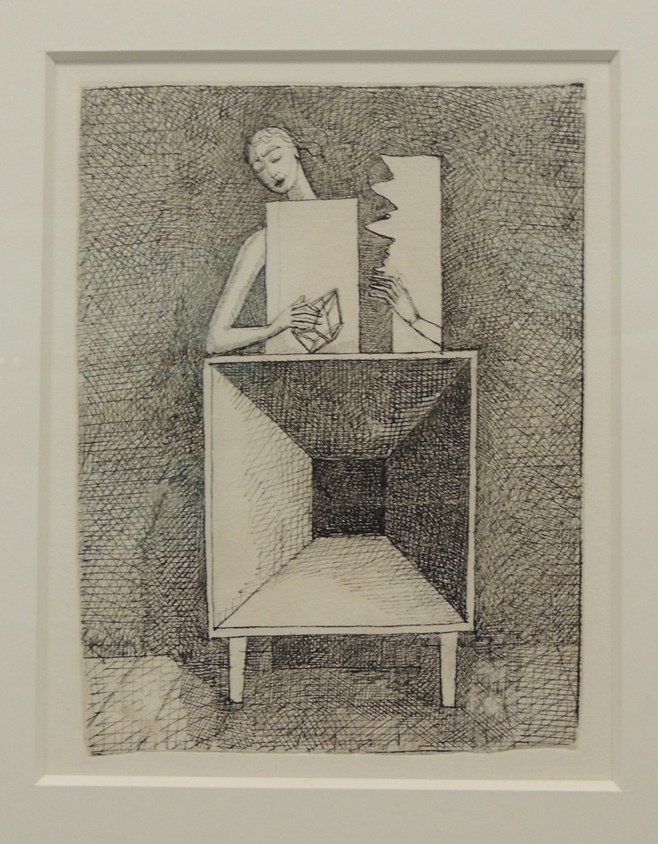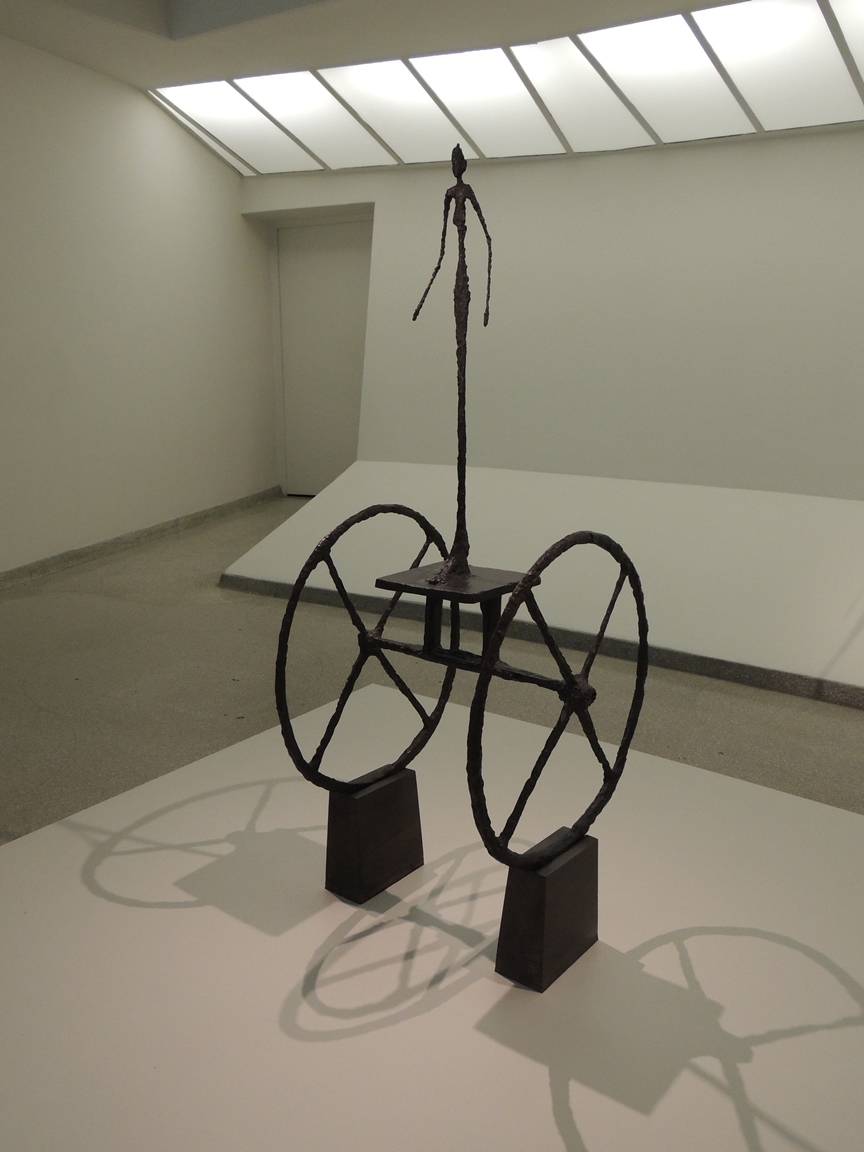Giacometti at Guggenheim
Talin Kraft
An excellent Giacometti exhibit at Guggenheim museum. It's very interesting to see how his style develops and transforms ― at first, he was experimenting with various forms, then he found his personal, easily recognizable image. He studied movement and stillness, gestures and poses, faces and figures. But even his trademark shapes change over time ― as he ages, his ethereal figures become heavier, stronger, more material.
His early works are really interesting. You can see how his experiments take him to very different styles and techniques, from cubism to abstractionism.
Here’s a piece I liked, it tricked me ― at first, I thought it was a pure abstraction, then I saw a head, it’s only recognizable from certain viewpoints.
Then, for a while, he was hanging out with surrealists, and you can definitely see the influence of Miró, Dali, Max Ernst and the like.
Some drawings and paintings:
His studies show the interest in different cultures:
It’s well known that after his return to figurative, representational work, Giacometti always tried to achieve likeness. He was famous for making his models sit still for hours, and his drawings and studies show perfectly proportionate bodies. However, that was lost when he moved to sculpture, and he could not explain his iconic style. He said: “I never tried to make thin sculptures . . . they became thin in spite of me.”
I find it interesting (and funny) that all his models have the same phenotype, his every portrait looks a bit like himself. Can you find a Japanese person in this collection?
For a while, he was making tiny figures, often on massive bases. I take this as a metaphor for feeling helpless and weighed down by circumstances.
Then there was a period when he placed his figures in various cages (feeling trapped?).
Another period when he was making groups of people (feeling lonely?).
Also, I have to say, he wasn't trying to flatter his models in the very least ― they have long noses, asymmetrical faces, they are not pretty at all. Nevertheless, they are beautiful, all of them.
In the end, I wanted to mention that there's a portrait of Giacometti on a 100 Swiss Frank banknote, with his famous sculpture of "Walking Man" on reverse. I have an immense respect for the country that's proud of its artists, writers and scientists (who are depicted on other banknotes) more than its politicians and generals.





















































